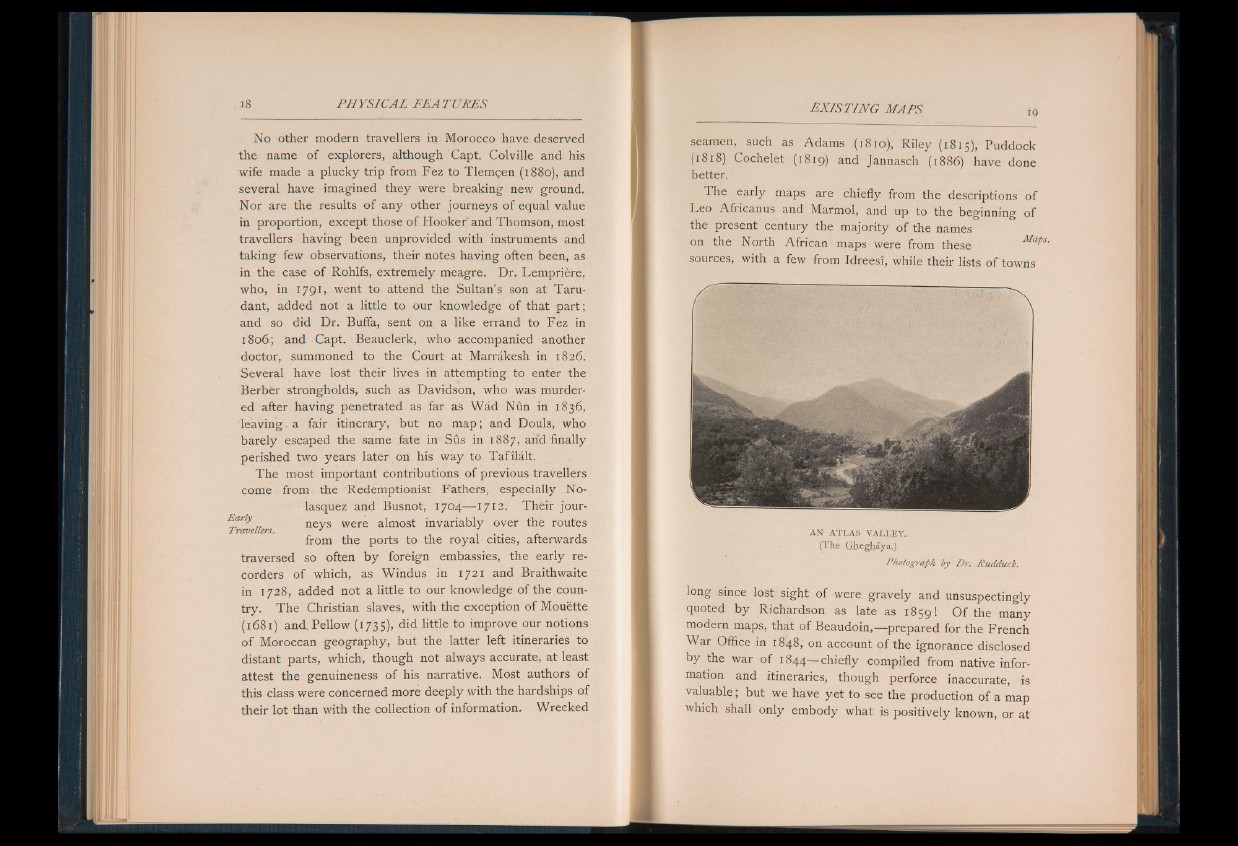
No other modern travellers in Morocco have deserved
the name of explorers, although Capt. Colville and his
wife made a plucky trip from Fez to Tlemgen (1880), and
several have imagined they were breaking new ground.
Nor are the results o f any other journeys o f equal value
in proportion, except those of Hooker' and Thomson, most
travellers having been unprovided with instruments and
taking few observations, their notes having often been, as
in the case of Rohlfs, extremely meagre. Dr. Lempriere,
who, in 1791, went to attend the Sultan’s son at Taru-
dant, added not a little to our knowledge of that part;
and so did Dr. Buffa, sent on a like errand to Fez in
1806; and Capt. Beauclerk, who accompanied another
doctor, summoned to the Court at Marrakesh in 1826.
Several have lost their lives in attempting to enter the
Berber strongholds, such as Davidson, who was murdered
after having penetrated as far as Wad Nun in 1836,
leaving. a fair itinerary, but no map; and Douls, who
barely escaped the same fate in Sus in 1887, and finally
perished two years later on his way to Tafilalt.
The most important contributions of previous travellers
come from the Redemptionist Fathers, especially Nolasquez
and Busnot, 1704&17 12. Their jourllf1
1 „ neys were almost invariably over the routes Travellers. J
from the ports to the royal cities, afterwards
traversed so often by foreign embassies, the early recorders
o f which, as Windus in 1721 and Braithwaite
in 1728, added not a little to our knowledge of the country.
The Christian slaves, with the exception of Mouette
(1681) and.Pellow ( 1735), did little to improve our notions
of Moroccan geography, but the latter left itineraries to
distant parts, which, though not always accurate, at least
attest the genuineness of his narrative. Most authors of
this class were concerned more deeply with the hardships of
their lot than with the collection of information. Wrecked
seamen, such as Adams (1810), Riley (1815), Puddock
(1818) Cochelet (1819) and Jannasch (1886) have done
better.
The early maps are chiefly from the descriptions of
Leo Africanus and Marmol, and up to the beginning of
the present century the majority o f the names
on the North African maps were from these- Maps'
sources, with a few from Idreesî, while their lists of towns
A N A T L A S V A L LE Y .
(The Gheghava.)
Photograph by Dr. Rudduck.
long since lost sight of were gravely and unsuspectingly
quoted by Richardson as late as 18591 O f the many
modern maps, that of Beaudoin,— prepared for the French
War Office in 1848, on account o f the ignorance disclosed
by the war o f 1844— chiefly compiled from native information
and itineraries, though perforce inaccurate, is
valuable; but we have y e t to see the production of a map
which shall only embody what is positively known, or at